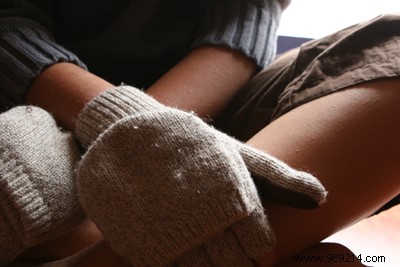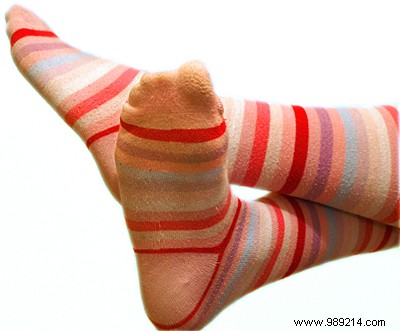 Raynaud's syndrome (or disease) is contracted by certain subjects in the event of exposure to cold, humidity or in a situation of emotional stress.
Raynaud's syndrome (or disease) is contracted by certain subjects in the event of exposure to cold, humidity or in a situation of emotional stress.
This benign pathology most of the time is nonetheless disturbing, especially in winter... It corresponds to poor blood circulation in the extremities (fingers, feet, toes, nose) and affects women more particularly.
In fact, a distinction must be made between the names "disease" and "syndrome" of Raynaud:the first, which manifests itself most often in people affected between their 15 and 25 years, is the primary phase of this condition. The syndrome, its secondary form, more serious and rarer, generally occurs around the age of 40. One can be reached by one or the other indistinctly, although the diagnosis of Raynaud's disease can constitute an alarm for the continuation.
However, suffering from Raynaud's disease, even when young, does not imply that it will inevitably deviate towards the syndrome. The symptoms of these conditions can also sometimes be indicative of another disease.
The chronic blood circulation disorder that is Raynaud's disease and syndrome was first described in 1862. The "attacks" occur periodically and suddenly:the affected parts become white, cold, sometimes numb or even numb. If the disease specifically affects the fingers and toes, in some cases it can reach the nose, mouth and ears.
The causes of the condition remain unknown, but having suffered frostbite or injuries to the extremities would increase the risk. Manual workers and people with arthritis or carpal tunnel syndrome are also at risk. The genetic factor also cannot be excluded.

Crises due to Raynaud's affections are said to be paroxysmal, that is to say, they can occur at any time - unlike acrocyanosis, which corresponds to hypersensitivity to cold accompanied by a permanent, but benign, cold. extremities.
Raynaud's "crisis" consists of 3 successive phases:the affected parts turn white, blue, then red with a tingling sensation and, quite often, pain.
A vascular examination (pulse) and a capillaroscopy (observation of the microcirculation in the nails) will make it possible to make a sure diagnosis, in favor of Raynaud's syndrome or another condition such as arteritis.
The best way to stop the discomfort of Raynaud's disease is nothing other than optimal protection against the cold:it is recommended to cover your hands properly with two pairs of gloves, silk for example covered with fleece gloves.
The feet will be wrapped in thick woolen socks (or warming material, in sports stores). The head and neck should be warmly dressed, as body heat escapes enormously through these parts.
In terms of medical care, there is unfortunately no definitive treatment for these conditions; very rarely, certain calcium channel blockers may be used, on regular medical prescription.